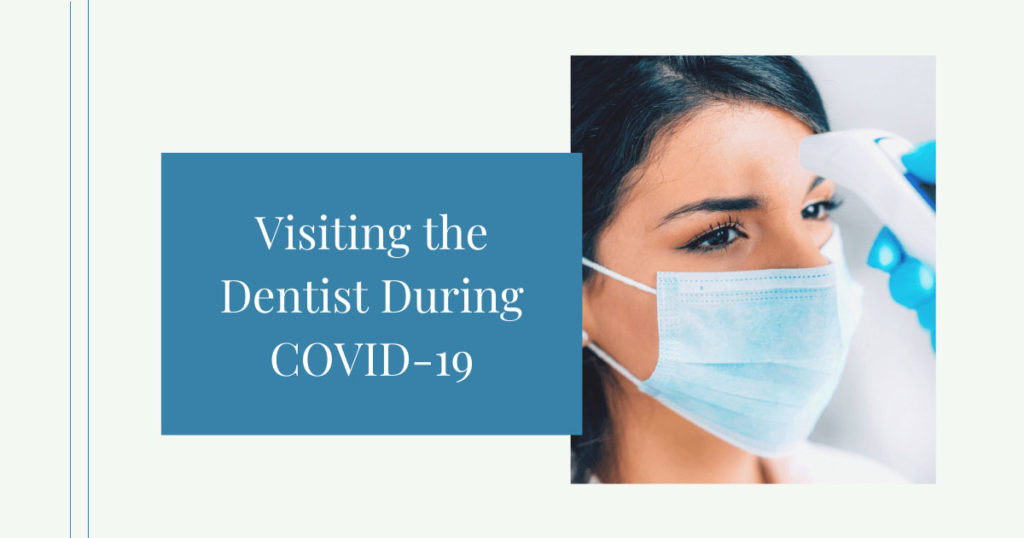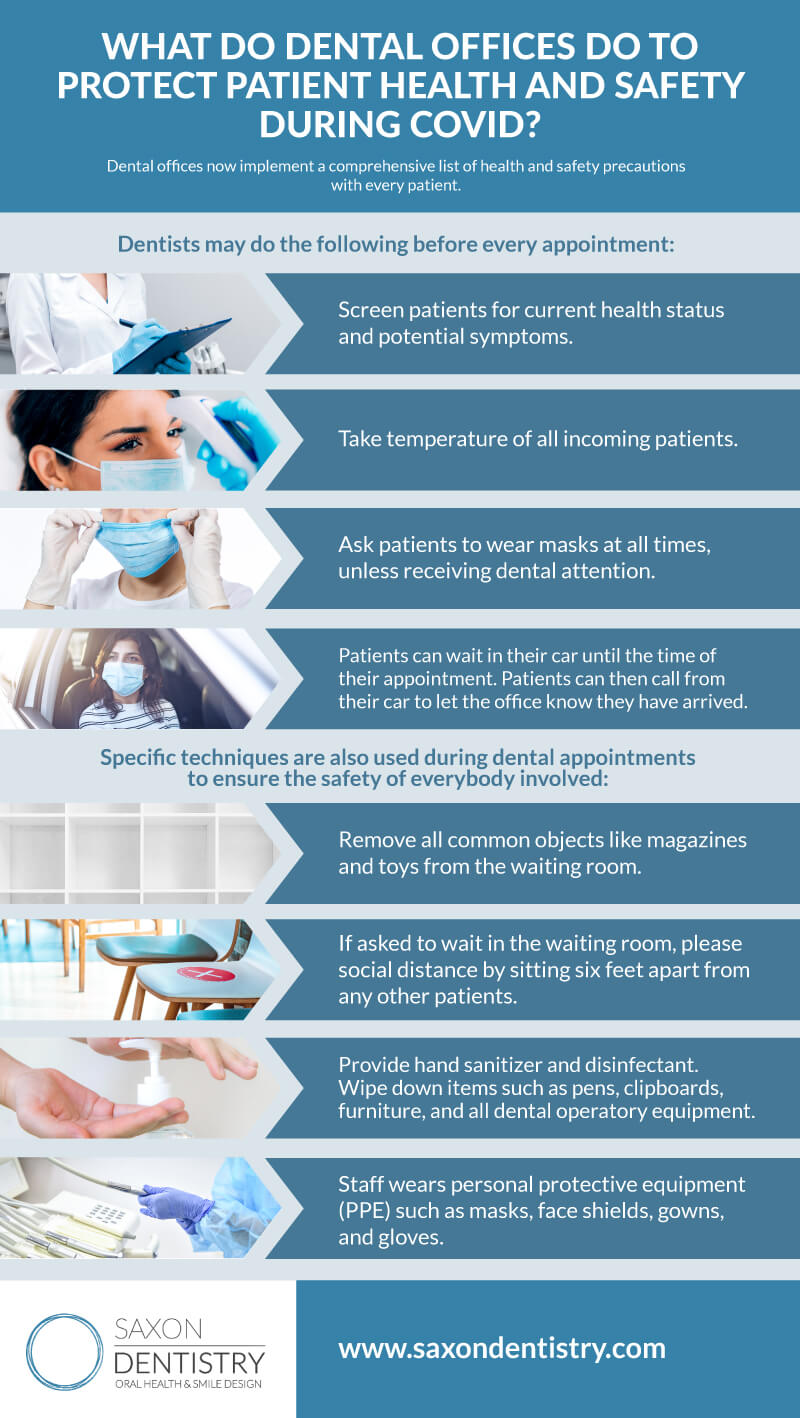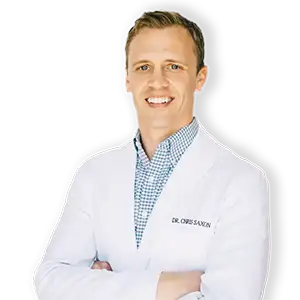
Is It Safe to Visit the Dentist During the COVID-19 Pandemic?
In just a few short months, the COVID-19 pandemic impacted every aspect of our lives. From grocery stores and concerts to schools and malls, safety protocols have been completely overhauled. This probably leaves you wondering: is it safe to visit the dentist during COVID?
Here’s what you need to know about staying safe at a dentist visit during COVID and the steps your dentist is taking to protect every patient.
What the American Dental Association Is Recommending
The American Dental Association (ADA) provides guidance for dentists as they work to guarantee patient safety from the coronavirus pandemic.
According to the ADA, “Treatment of dental disease, as well as prevention, is important to keep people healthy.”
As a result, dental offices were allowed to reopen for patient appointments on May 1 in many areas. The ADA instructed dentists to build upon their existing infection control protocols with the highest level of PPE available in order to protect patients and dental teams alike.
“The longer dental practices remain closed to preventive care and treatment for early forms of dental disease,” the ADA explained, “the more likely that patients’ untreated disease will progress, increasing the complexity and cost for treatment down the road.”
What Do Dental Offices Do to Protect Patient Health and Safety During COVID?

Dental offices now implement a comprehensive list of health and safety precautions with every patient.
For example, dentists may do the following before every appointment:
- Screen patients for current health status and potential symptoms
- Take the temperature of all incoming patients
- Ask patients to wear masks at all times, unless receiving dental attention
- Have patients call from their cars when they arrive to ensure social distancing
Specific techniques are also used during dental appointments to ensure the safety of everybody involved:
- Remove all common objects like magazines and toys from the waiting room
- Place chairs in the waiting room at least six feet apart
- Provide hand sanitizer and disinfectant
- Wipe down items such as pens, clipboards, and furniture
- Wear personal protective equipment (PPE) such as masks, face shields, gowns, and gloves
Many dentists have also upgraded their air filtration systems to maximize the elimination of airborne particles and pathogens.
Are All Dental Procedures Safe During COVID?
The strategic precautions enforced by dentists make most dental procedures safe. The use of PPE, powerful air filtration, social distancing, and infection control can make it possible to eliminate the coronavirus before it spreads.
However, your dentist may approach certain procedures with more caution, especially procedures that generate aerosols.
Aerosols are very small particles suspended in the air. Research suggests that COVID-19 may spread through aerosols. As a result, your dentist may temporarily suspend the use of dental tools known to create aerosols, including drills, ultrasonic scalers, and air-water syringes. If any of those tools must be implemented, the use of a high-powered suction can reduce airborne contamination by at least 95%.
What You Can Do To Protect Yourself During Your Visit
Consider these tips to ensure your next dentist appointment during COVID is safe:
- Stay in your car until your appointment begins
- Wear a mask before and after your appointment
- Do not touch common surfaces and objects if possible
- Do not touch used or non-sanitized pens and doorknobs
- Ask your dentist about their specific COVID-19 procedures
Don’t hesitate to ask your dentist about their protocol. Many dental offices are implementing carefully designed safety precautions to prevent the transmission of COVID-19 and give you high-quality dental care.

